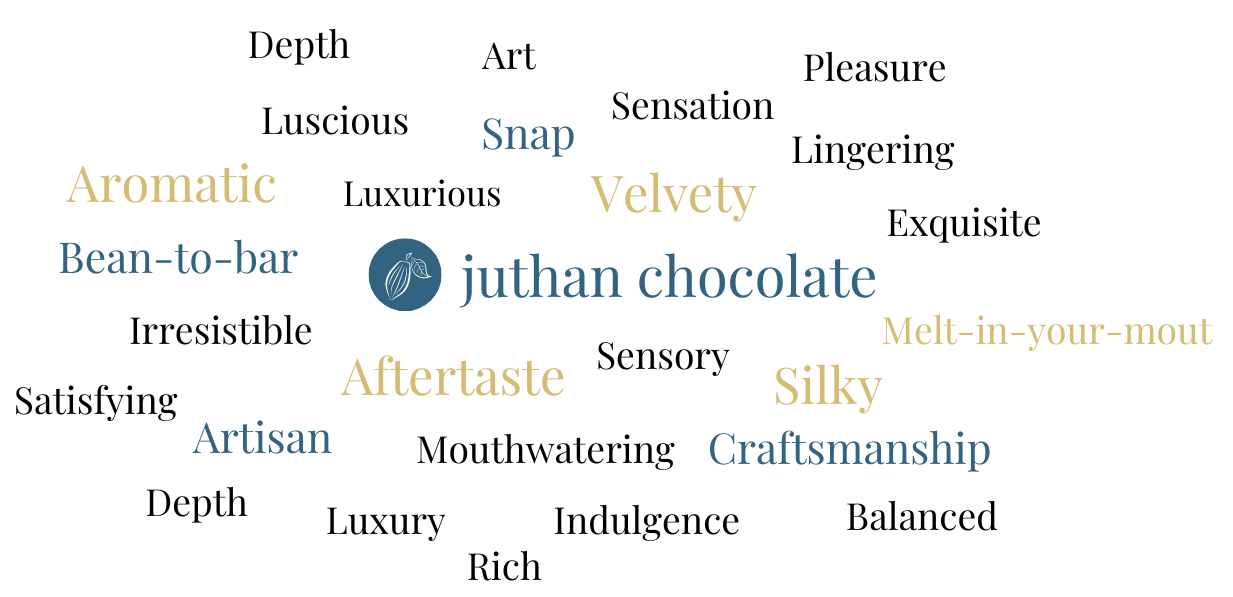
Chocolate, often referred to as the "food of the gods," has been enjoyed by cultures around the world for centuries. It is a sensory experience that transcends the boundaries of taste, evoking pleasure and indulgence. However, true chocolate connoisseurs know that there is an art to tasting chocolate—a journey that allows you to savour its nuances, flavours, and textures. In this blog post, we will explore the steps to take in order to fully appreciate the complexity and depth of this delightful treat.
 |
Step 1: Choose High-Quality Chocolate: To embark on a memorable tasting experience, it's crucial to start with high-quality chocolate. Look for bars that contain a high percentage of cocoa (60% or more), as they tend to have richer flavours. Additionally, opt for chocolates made by reputable brands like juthan chocolate known for their expertise and dedication to craftsmanship. |
||
| Step 2: Observe the Appearance: Before diving into the tasting, take a moment to observe the chocolate's appearance. Notice the colour, shine, and texture of the bar. Good-quality chocolate should have a glossy sheen and a smooth surface, indicating proper tempering and a well-preserved aroma. |  |
||
 |
Step 3: Engage Your Sense of Smell: The aroma of chocolate is an integral part of the tasting experience. Gently inhale the scent released by the chocolate, taking note of any distinctive fragrances. You may detect notes of vanilla, fruit, nuts, or even floral hints. Allow your sense of smell to guide you, as it can offer valuable insights into the chocolate's flavour profile. | ||
| Step 4: Snap and Listen: Now, it's time to engage your sense of hearing. Break a piece of chocolate off the bar and listen for a crisp, clean snap. A well-tempered chocolate will produce this characteristic sound, indicating that it has been properly processed. The snap is an indication of the chocolate's texture and structural integrity. |  |
||
|
|
Step 5: Take a Small Bite: Place a small piece of chocolate on your tongue and let it melt slowly. Avoid chewing right away, as this can hinder your ability to discern the full range of flavors. As the chocolate melts, pay attention to the evolving taste sensations. Is it bitter, sweet, or acidic? Are there any unique flavors that emerge? | ||
| Step 6: Consider Texture: Texture plays a significant role in the overall enjoyment of chocolate. Notice how the chocolate feels in your mouth—is it smooth, creamy, or grainy? Does it melt easily, coating your palate with a velvety richness? Appreciating the texture can enhance your understanding of the chocolate's quality and craftsmanship. |  |
||
|
|
Step 7: Assess the Aftertaste: Once the chocolate has melted completely, take note of the lingering flavors and aftertaste. A high-quality chocolate will leave a pleasant and lasting impression on your palate. Pay attention to any subtle or complex notes that arise after the initial taste, as they can reveal hidden layers of flavor. |
|
|
| Step 8: Pairings and Experimentation: To further expand your chocolate tasting experience, consider pairing it with complementary flavors such as coffee, wine, or fruits. Experiment with different combinations to discover how they interact and enhance each other. This experimentation can provide new dimensions to your appreciation of chocolate and its versatility. |
|
Conclusion: Tasting chocolate is an art that requires patience, mindfulness, and a willingness to explore. By following these steps and immersing yourself in the sensory experience, you can unlock the secrets hidden within each of juthan chocolate's delectable chocolate.
So, the next time you savor a bar of fine chocolate, take the time to appreciate its appearance, aroma, taste, and texture — it's an art and a journey that will heighten your enjoyment and deepen your love for chocolate




